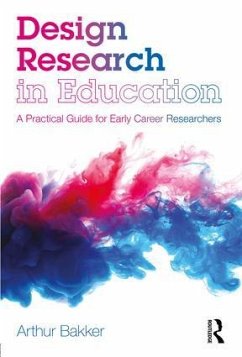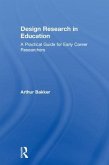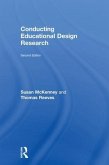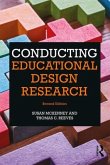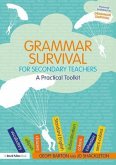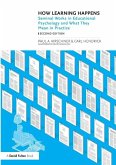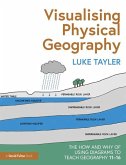Arthur Bakker (The Netherlands University of Amsterdam)
Design Research in Education
A Practical Guide for Early Career Researchers
Arthur Bakker (The Netherlands University of Amsterdam)
Design Research in Education
A Practical Guide for Early Career Researchers
- Broschiertes Buch
- Merkliste
- Auf die Merkliste
- Bewerten Bewerten
- Teilen
- Produkt teilen
- Produkterinnerung
- Produkterinnerung
Design Research in Education is a practical guide containing all the information required to begin a design-research project.
Andere Kunden interessierten sich auch für
![Design Research in Education Design Research in Education]() Arthur BakkerDesign Research in Education138,99 €
Arthur BakkerDesign Research in Education138,99 €![Conducting Educational Design Research Conducting Educational Design Research]() Susan McKenneyConducting Educational Design Research154,99 €
Susan McKenneyConducting Educational Design Research154,99 €![Conducting Educational Design Research Conducting Educational Design Research]() Susan McKenney (The Netherlands University of Twente)Conducting Educational Design Research48,99 €
Susan McKenney (The Netherlands University of Twente)Conducting Educational Design Research48,99 €![Grammar Survival for Secondary Teachers Grammar Survival for Secondary Teachers]() Geoff BartonGrammar Survival for Secondary Teachers37,99 €
Geoff BartonGrammar Survival for Secondary Teachers37,99 €![How Learning Happens How Learning Happens]() Paul A. KirschnerHow Learning Happens21,99 €
Paul A. KirschnerHow Learning Happens21,99 €![The Teaching Improvement Agenda The Teaching Improvement Agenda]() David Lynch (Australia Southern Cross University)The Teaching Improvement Agenda37,99 €
David Lynch (Australia Southern Cross University)The Teaching Improvement Agenda37,99 €![Visualising Physical Geography: The How and Why of Using Diagrams to Teach Geography 11-16 Visualising Physical Geography: The How and Why of Using Diagrams to Teach Geography 11-16]() Luke TaylerVisualising Physical Geography: The How and Why of Using Diagrams to Teach Geography 11-1631,99 €
Luke TaylerVisualising Physical Geography: The How and Why of Using Diagrams to Teach Geography 11-1631,99 €-
-
-
Design Research in Education is a practical guide containing all the information required to begin a design-research project.
Produktdetails
- Produktdetails
- Verlag: Taylor & Francis Ltd
- Seitenzahl: 314
- Erscheinungstermin: 4. Juli 2018
- Englisch
- Abmessung: 234mm x 156mm x 18mm
- Gewicht: 482g
- ISBN-13: 9781138574489
- ISBN-10: 1138574481
- Artikelnr.: 52624305
- Herstellerkennzeichnung
- Libri GmbH
- Europaallee 1
- 36244 Bad Hersfeld
- gpsr@libri.de
- Verlag: Taylor & Francis Ltd
- Seitenzahl: 314
- Erscheinungstermin: 4. Juli 2018
- Englisch
- Abmessung: 234mm x 156mm x 18mm
- Gewicht: 482g
- ISBN-13: 9781138574489
- ISBN-10: 1138574481
- Artikelnr.: 52624305
- Herstellerkennzeichnung
- Libri GmbH
- Europaallee 1
- 36244 Bad Hersfeld
- gpsr@libri.de
Arthur Bakker is a Fellow at the University of Bremen, Germany, and an Associate Professor at Utrecht University, the Netherlands.
Part 1: Theory and Practice Chapter 1: What is Design Research in Education
Chapter 2: History of Design Research in Education Intermezzo 1: A Fictive
Dialogue between two Research Approaches Chapter 3: Design Principles,
Conjecture Mapping, and Hypothetical Learning Trajectories Chapter 4:
Research Questions in Design Research Chapter 5: Research Quality in Design
Research Chapter 6: Argumentative Grammars used in Design Research Chapter
7: Writing an Empirical Design Research Paper Chapter 8: Supervising Design
Research in Education Part 2: Examples Chapter 9: Teaching Design Research
as a Case of Cultivating a Community of Professional Practice Chapter 10:
'Harvesting' Ecosystem Dynamics Through a Computational Model of a Garden
Chapter 11: Giant Steps for Algebra Chapter 12: Explicit Oral and Written
Reasoning During Science Argumentation Chapter 13: An Embodied Approach to
Derivatives Chapter 14: Building Bridges: Uniting Students, Researchers,
and Teachers to Improve a Course Chapter 15: Easy Equilibrium: Discovery in
an Introductory Chemistry Course Chapter 16: Rearview Mirrors for the
"Expert Blind Spot": Usign Design to Access Surgeons' Tacit Knowledge and
Create Shared Referents for Teaching Chapter 17: Children's Reasoning about
Animal Lifecycles: Tradeoffs Across Four Different Designs Chapter 18:
Linking Design and Theory: Using Conjecture Maps to Focus the Design
Research Process in Art Education Chapter 19: Literary Education with
Narrative Digital Games: From Formulating Research Equestions to Capturing
the Design Rationale Chapter 20: From Implementer to Co-Designer: A
Teacher's Changing Role in a Design Research Project Chapter 21: Using
Hypothetical Learning Trajectories in Design Research Chapter 22:
Reflection and Wish List
Chapter 2: History of Design Research in Education Intermezzo 1: A Fictive
Dialogue between two Research Approaches Chapter 3: Design Principles,
Conjecture Mapping, and Hypothetical Learning Trajectories Chapter 4:
Research Questions in Design Research Chapter 5: Research Quality in Design
Research Chapter 6: Argumentative Grammars used in Design Research Chapter
7: Writing an Empirical Design Research Paper Chapter 8: Supervising Design
Research in Education Part 2: Examples Chapter 9: Teaching Design Research
as a Case of Cultivating a Community of Professional Practice Chapter 10:
'Harvesting' Ecosystem Dynamics Through a Computational Model of a Garden
Chapter 11: Giant Steps for Algebra Chapter 12: Explicit Oral and Written
Reasoning During Science Argumentation Chapter 13: An Embodied Approach to
Derivatives Chapter 14: Building Bridges: Uniting Students, Researchers,
and Teachers to Improve a Course Chapter 15: Easy Equilibrium: Discovery in
an Introductory Chemistry Course Chapter 16: Rearview Mirrors for the
"Expert Blind Spot": Usign Design to Access Surgeons' Tacit Knowledge and
Create Shared Referents for Teaching Chapter 17: Children's Reasoning about
Animal Lifecycles: Tradeoffs Across Four Different Designs Chapter 18:
Linking Design and Theory: Using Conjecture Maps to Focus the Design
Research Process in Art Education Chapter 19: Literary Education with
Narrative Digital Games: From Formulating Research Equestions to Capturing
the Design Rationale Chapter 20: From Implementer to Co-Designer: A
Teacher's Changing Role in a Design Research Project Chapter 21: Using
Hypothetical Learning Trajectories in Design Research Chapter 22:
Reflection and Wish List
Part 1: Theory and Practice Chapter 1: What is Design Research in Education
Chapter 2: History of Design Research in Education Intermezzo 1: A Fictive
Dialogue between two Research Approaches Chapter 3: Design Principles,
Conjecture Mapping, and Hypothetical Learning Trajectories Chapter 4:
Research Questions in Design Research Chapter 5: Research Quality in Design
Research Chapter 6: Argumentative Grammars used in Design Research Chapter
7: Writing an Empirical Design Research Paper Chapter 8: Supervising Design
Research in Education Part 2: Examples Chapter 9: Teaching Design Research
as a Case of Cultivating a Community of Professional Practice Chapter 10:
'Harvesting' Ecosystem Dynamics Through a Computational Model of a Garden
Chapter 11: Giant Steps for Algebra Chapter 12: Explicit Oral and Written
Reasoning During Science Argumentation Chapter 13: An Embodied Approach to
Derivatives Chapter 14: Building Bridges: Uniting Students, Researchers,
and Teachers to Improve a Course Chapter 15: Easy Equilibrium: Discovery in
an Introductory Chemistry Course Chapter 16: Rearview Mirrors for the
"Expert Blind Spot": Usign Design to Access Surgeons' Tacit Knowledge and
Create Shared Referents for Teaching Chapter 17: Children's Reasoning about
Animal Lifecycles: Tradeoffs Across Four Different Designs Chapter 18:
Linking Design and Theory: Using Conjecture Maps to Focus the Design
Research Process in Art Education Chapter 19: Literary Education with
Narrative Digital Games: From Formulating Research Equestions to Capturing
the Design Rationale Chapter 20: From Implementer to Co-Designer: A
Teacher's Changing Role in a Design Research Project Chapter 21: Using
Hypothetical Learning Trajectories in Design Research Chapter 22:
Reflection and Wish List
Chapter 2: History of Design Research in Education Intermezzo 1: A Fictive
Dialogue between two Research Approaches Chapter 3: Design Principles,
Conjecture Mapping, and Hypothetical Learning Trajectories Chapter 4:
Research Questions in Design Research Chapter 5: Research Quality in Design
Research Chapter 6: Argumentative Grammars used in Design Research Chapter
7: Writing an Empirical Design Research Paper Chapter 8: Supervising Design
Research in Education Part 2: Examples Chapter 9: Teaching Design Research
as a Case of Cultivating a Community of Professional Practice Chapter 10:
'Harvesting' Ecosystem Dynamics Through a Computational Model of a Garden
Chapter 11: Giant Steps for Algebra Chapter 12: Explicit Oral and Written
Reasoning During Science Argumentation Chapter 13: An Embodied Approach to
Derivatives Chapter 14: Building Bridges: Uniting Students, Researchers,
and Teachers to Improve a Course Chapter 15: Easy Equilibrium: Discovery in
an Introductory Chemistry Course Chapter 16: Rearview Mirrors for the
"Expert Blind Spot": Usign Design to Access Surgeons' Tacit Knowledge and
Create Shared Referents for Teaching Chapter 17: Children's Reasoning about
Animal Lifecycles: Tradeoffs Across Four Different Designs Chapter 18:
Linking Design and Theory: Using Conjecture Maps to Focus the Design
Research Process in Art Education Chapter 19: Literary Education with
Narrative Digital Games: From Formulating Research Equestions to Capturing
the Design Rationale Chapter 20: From Implementer to Co-Designer: A
Teacher's Changing Role in a Design Research Project Chapter 21: Using
Hypothetical Learning Trajectories in Design Research Chapter 22:
Reflection and Wish List

